Out of a window in Saltivka. How Kharkiv photographer filmed over 60 rocket launches from Russian Belgorod
Vadym lives in Saltivka, a residential area in northeast Kharkiv. The windows of his apartment on the sixth floor face north. "For a long time, I could not understand what is that light shining on the horizon," Vadym begins his story.
“Sometimes I was seeing bright shots of light rising up and then disappearing. I was thinking that perhaps it was our air defense working. I did not immediately realise what it was and how far it was from where I lived. Belgorod in Russia is 60 kilometres (~40 miles) from my house”, Vadym says.
Belgorod view
“In June, when the weather cleared up, the visibility got also better. One time I saw a dot of light going up, higher and higher until it disappeared somewhere. The gap was not visible. And then in a minute, I heard an explosion. Only later did I realise that this light in the sky was showing from the side of Belgorod and that the spot of light was the exit of the rocket.”
Vadym Bielikov is my friend and a great videographer. In better times, he worked for one of Kharkiv's TV stations, and we were going on field trips together. For the past six months, Vadym has been unemployed. All TV channels in Kharkiv got closed; currently, only two cameramen are working for the news service. Vadym’s colleague, also a cameraman, is unloading the freight from trains. A fellow TV host serves in the Armed Forces. Vadym assures that if called up, he would not hide from mobilisation either. But so far, he has not been conscripted, there is no work, and he has to take care of his 84-year-old mother, while it is impossible to get a job even as a cashier at the supermarket. For now, Vadym accepted the fact that he will not be able to work in the near future. To stop wasting time, he signed up for a category C driving course.
“I will become a lorry driver,” Vadym laughs.
In the meantime, he takes photographs of the rocket launches from Belgorod.
Being shelled by Russia every day, Kharkiv adheres to a light-masking regime. The street lights get turned off at night, not many people use indoor lights either. So when the skies are dark, black even, flashes of rocket launches are particularly visible against this background.
THE SKIES ARE BLACK. THE FLASHES OF ROCKET LAUNCHES ARE PARTICULARLY VISIBLE AGAINST THIS BACKGROUND
Vadym's photos show traces of rockets against the background of the night or dawn sky of various shades and colours. You could even call the photos stunning until you remember that they are, in fact, images showing death.
At first, Vadym spotted and photographed "Iskander" missiles. Then anti-aircraft S-300.
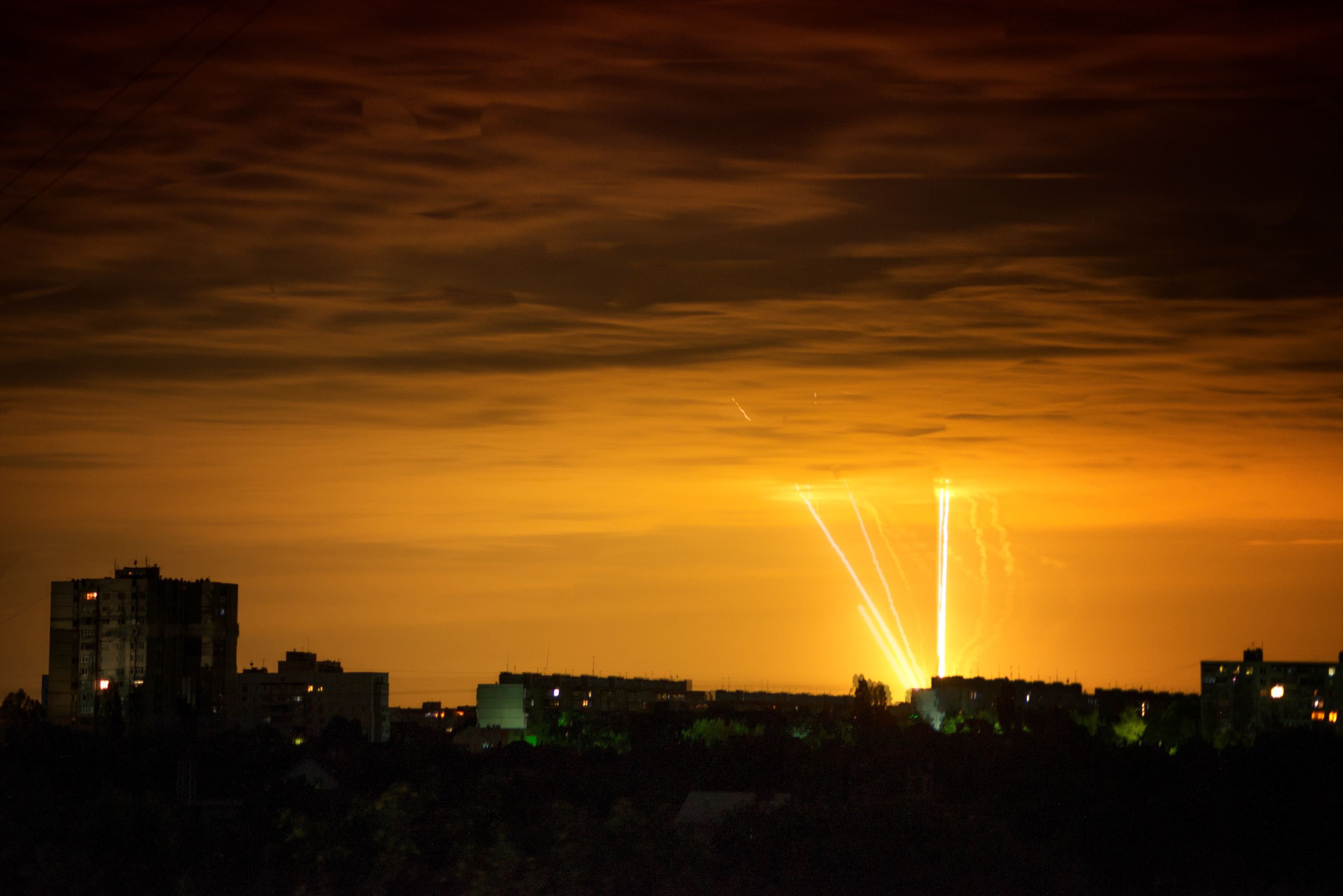
“They launch them every day. Sometimes, eight times a day. If it doesn’t strike Kharkiv, then it strikes other towns in the region: Chuhuyiv, Merefa.”
“A rocket flies out, an air raid alarm goes off. I leap to the window, see this illumination and understand that the rocket was launched. I press the shutter button on the camera, and in an instant, the rocket is seen above the buildings here,” Vadym says.
The photographer noticed that the shelling is happening in waves: sometimes continuously, sometimes quite sparingly – then he doesn’t even have enough time to shoot.
“To be honest, I manage to take photos only when the third or fourth missile arrives. My camera always stands on a tripod by the window. But I'm not always nearby. Once there was a mass shelling when six rockets were launched. I managed to shoot four. The rockets flew towards Chuhuyiv, southeast of Kharkiv.”
When the light dot flies, it is difficult to identify the type of rocket judging by its appearance. But when Vadym took a look at his earlier photos, he noticed that the "Iskanders" have a brighter flame torch.
When asked whether he is afraid to photograph rockets, Vadym brushes it off: “The worst time was in spring when the city was shelled 60 times a day. The thunder lasted all day through, from morning till night. You could literally see "Grads" (MLRS) flying around. At that time, I thought of packing my things, grabbing my mother and fleeing the city.”
THE AIR RAID ALARM GOES Off - I leap TO THE WINDOW and press THE SHUTTER button.
“Once in spring, I went to feed the cats of a neighbour who fled abroad. When I arrived, I saw a car in the yard destroyed by a projectile. There were several cracks, and the house was hit several times, literally next to where the apartment with cats was. It was scary then. I immediately grabbed the cats and took them home with me.”
But when Ukraine’s armed forces kicked the Russian troops out of Tsyrkuny (the village of Tsyrkuny was a stronghold for tank attacks on Kharkiv and artillery shelling of Northern Saltivka, one of Kharkiv's districts - author), it became easier. The Russians stopped attacking the city with small calibre weapons. Now most of the time, we have "big fish" flying around. And if your house is hit by "Iskander" (that is half a ton of explosives), it doesn't really matter whether you are standing near the window or not.
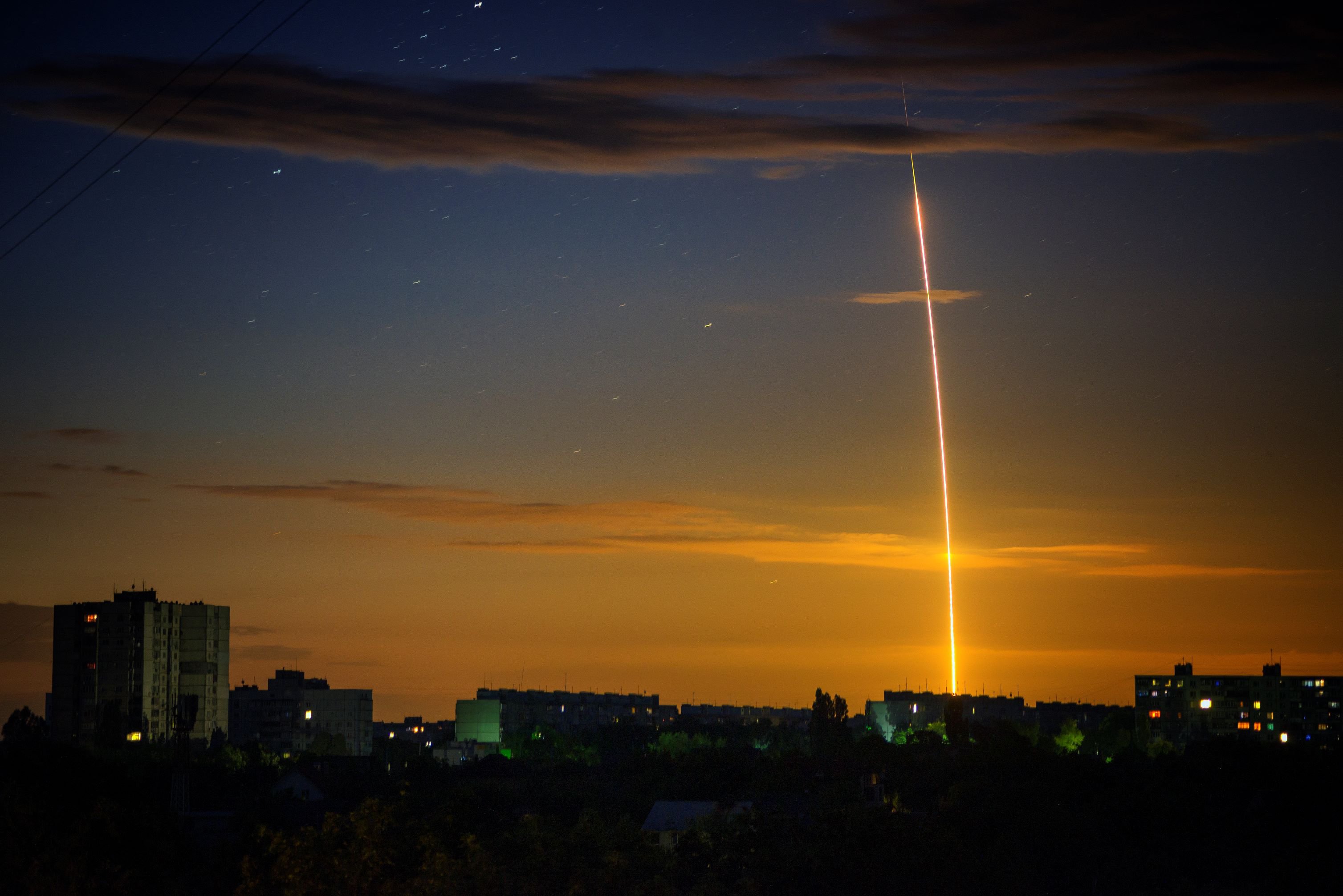
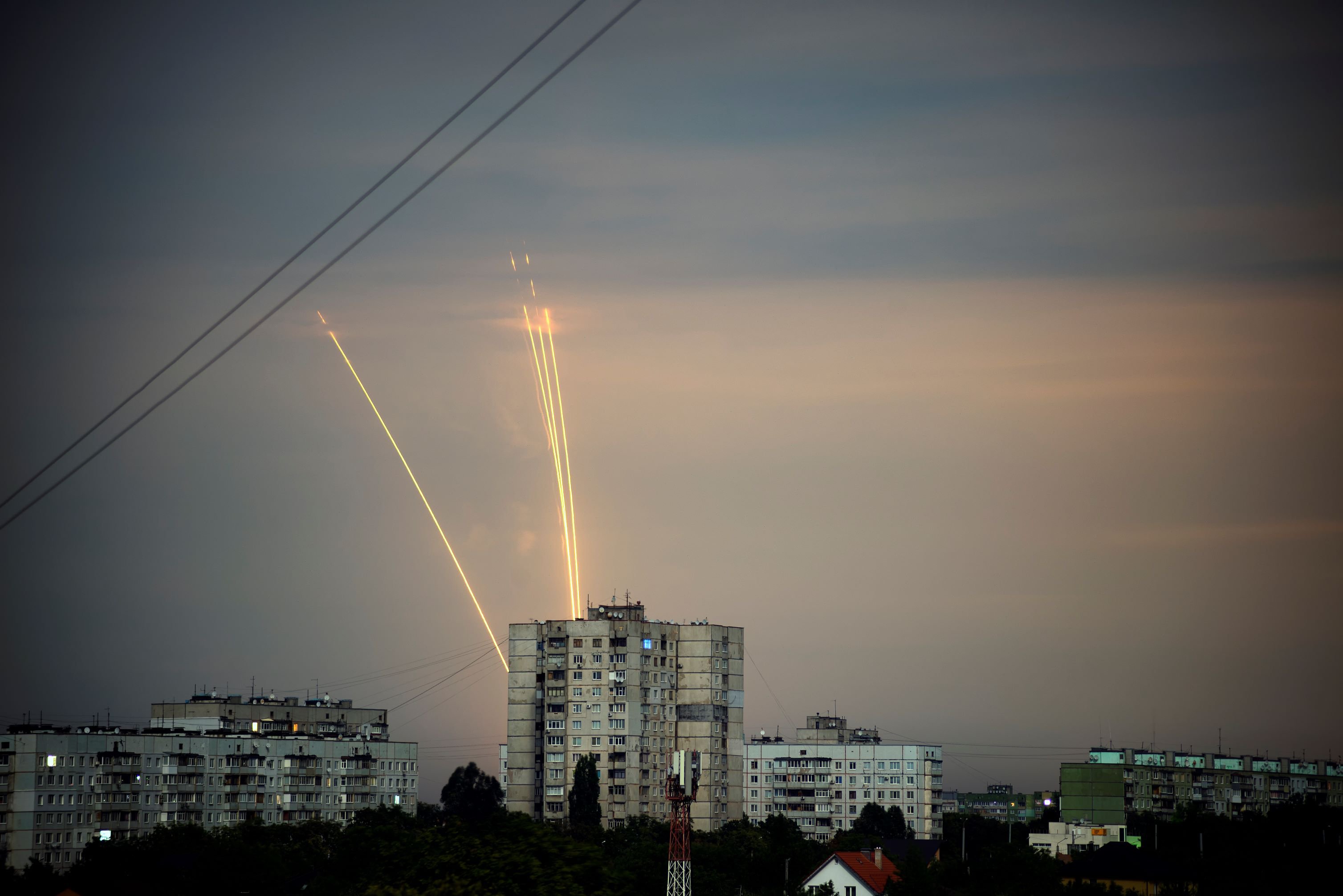
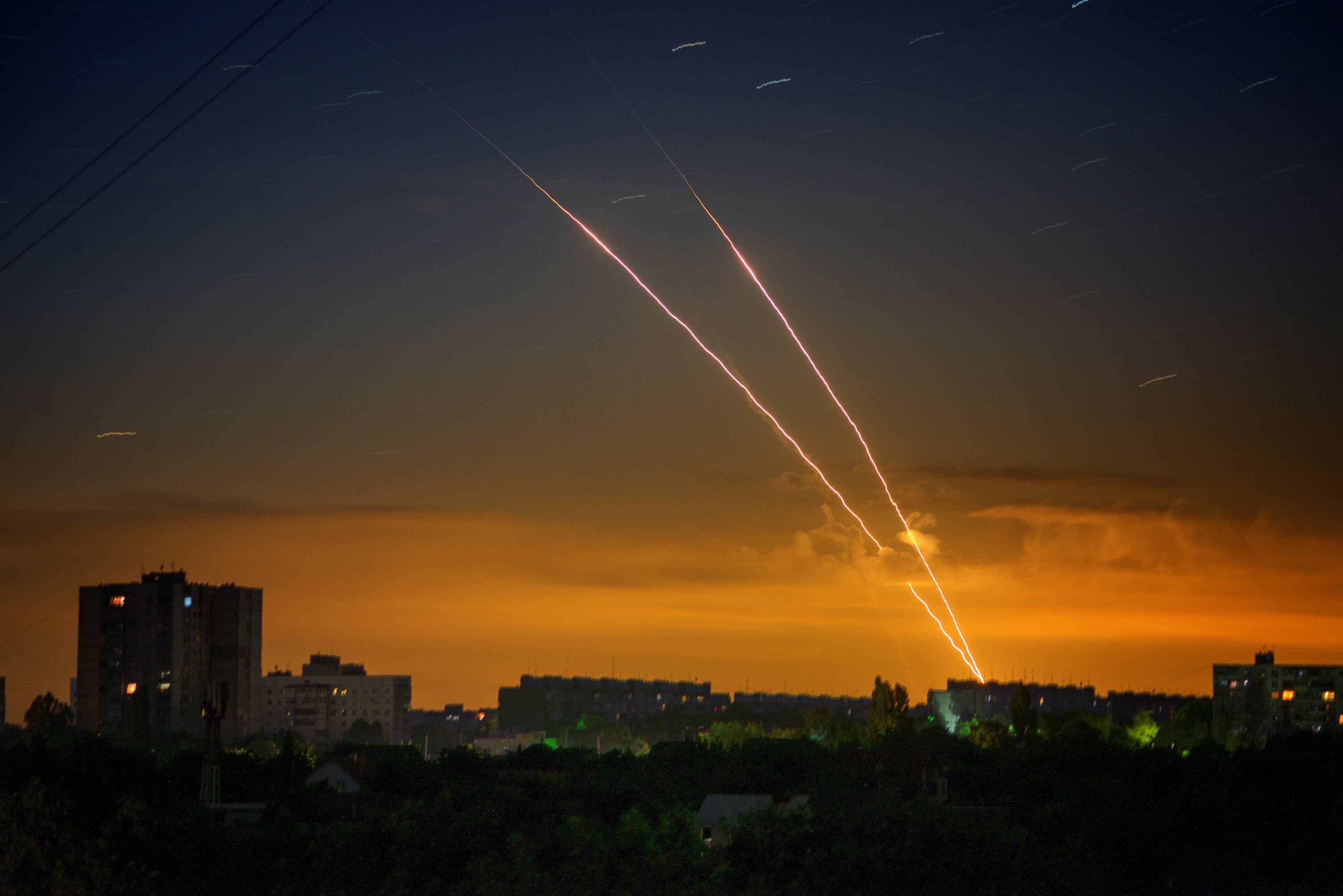

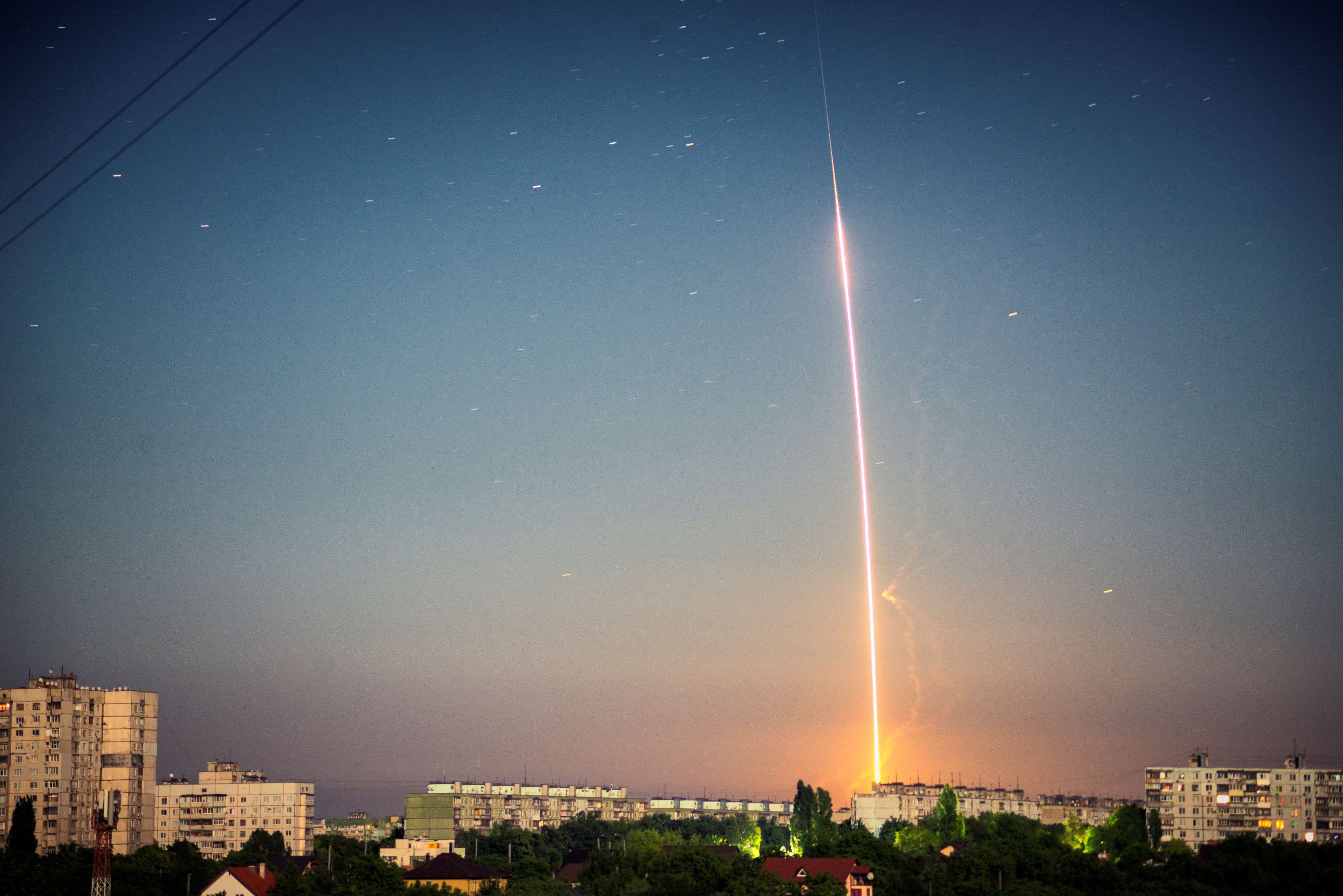
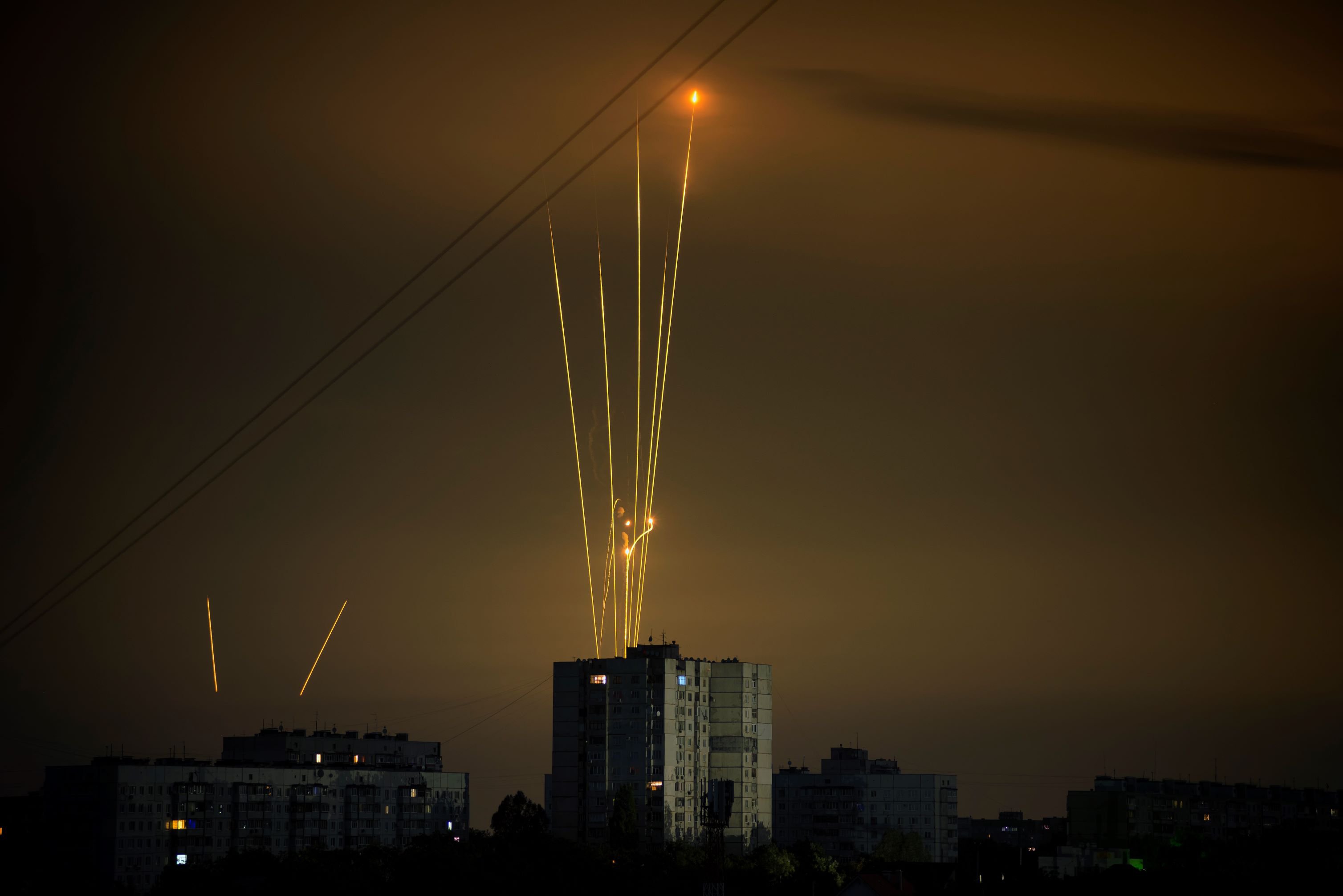
15 серпня 2:58
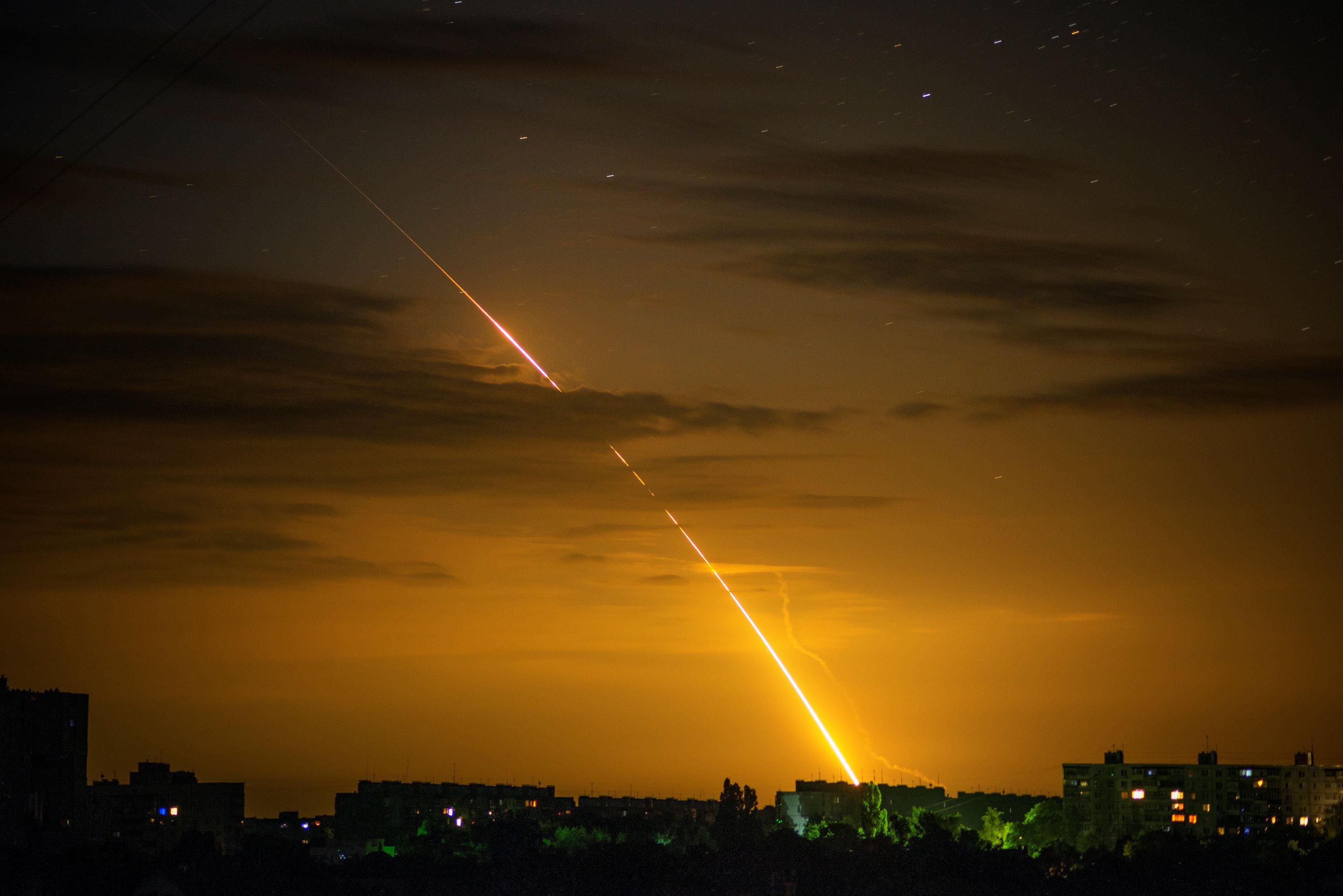
21 червня 22:54
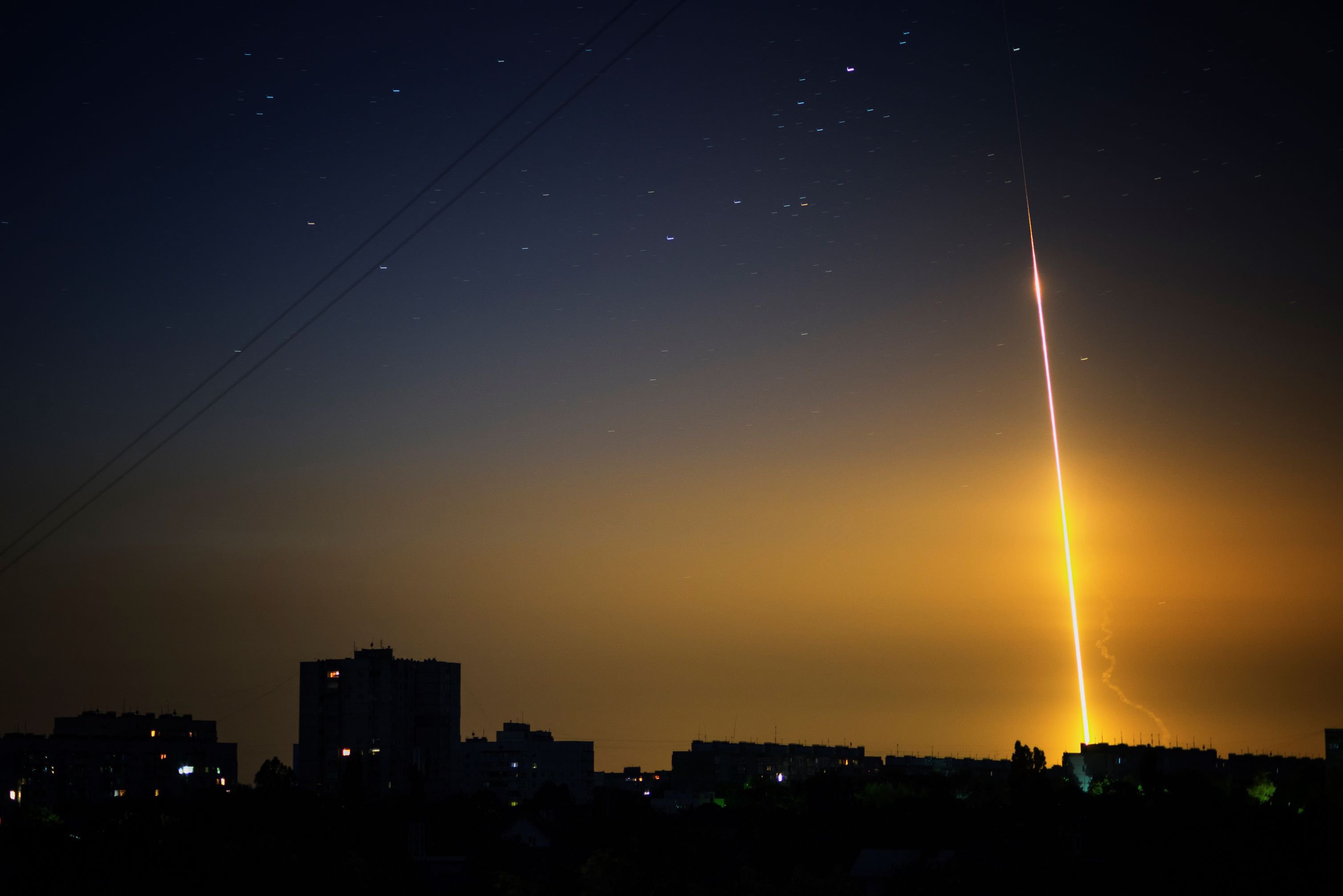
18 червня 22:04

Now and then Vadym rides a bicycle around the city. He remembers how "Iskander" hit his niece's school. The missile struck exactly the school’s central entrance. "Iskanders" are quite accurate. And with the S-300, he says, you never know where they are flying to.
“I saw them once hitting the wasteland where there was literally nothing, even close. Where were they aiming at? Such a poor accuracy!”
“Or take, for example, a hangar which was hit in Korotychi (a village on the outskirts of Kharkiv where a sports airfield is located - author). The debris was scattered 800 metres away from the place of the strike. The missile pit was 5 metres deep and 8-10 metres wide. They used "Iskander" to hit the small airfield of the aeroclub where there was nothing but the small sports training planes. The total cost of the entire airfield was less than the cost of the missile fired at it. They strike for the sake of striking just to terrorise the city. Kharkiv suffers daily
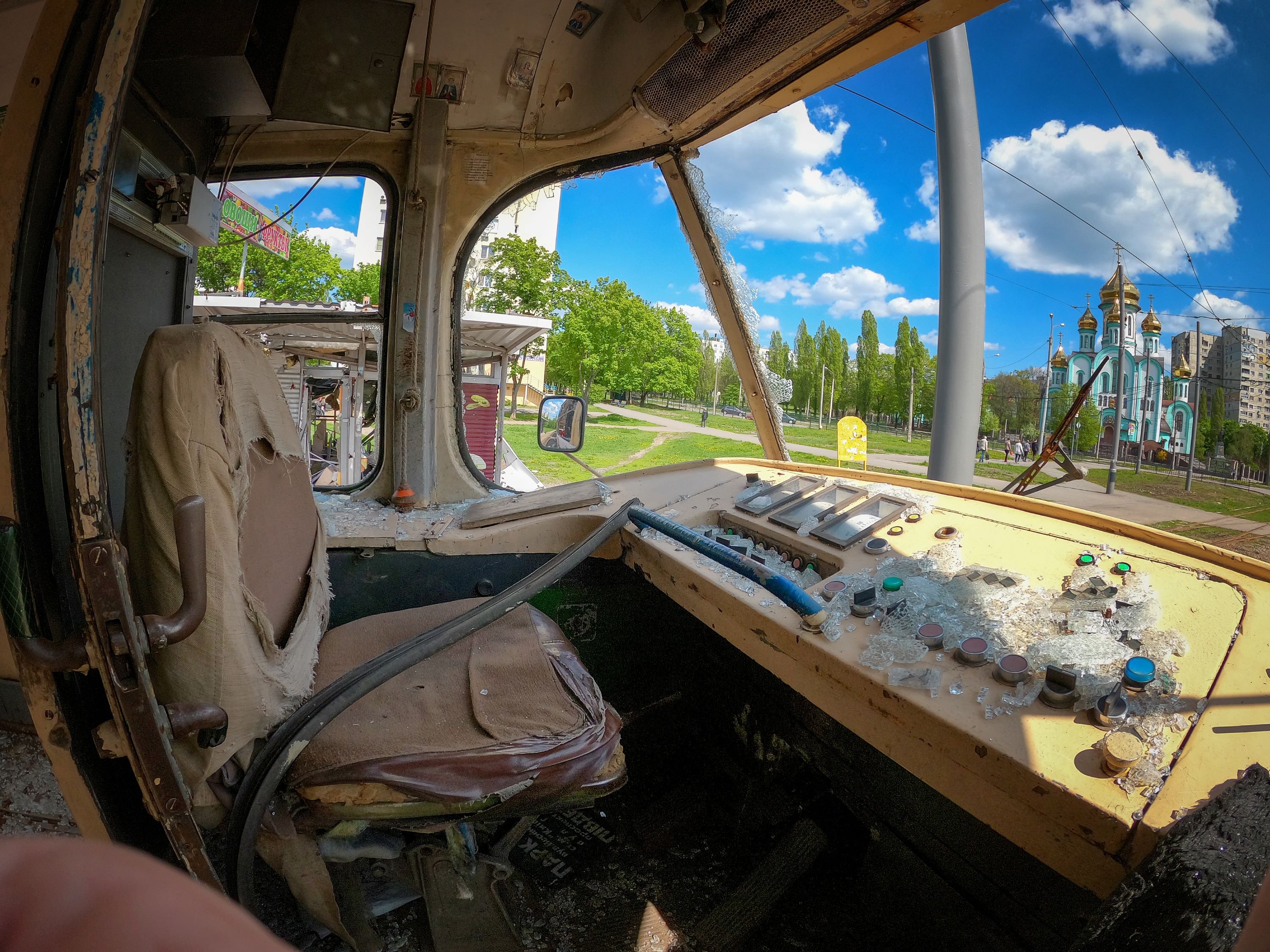
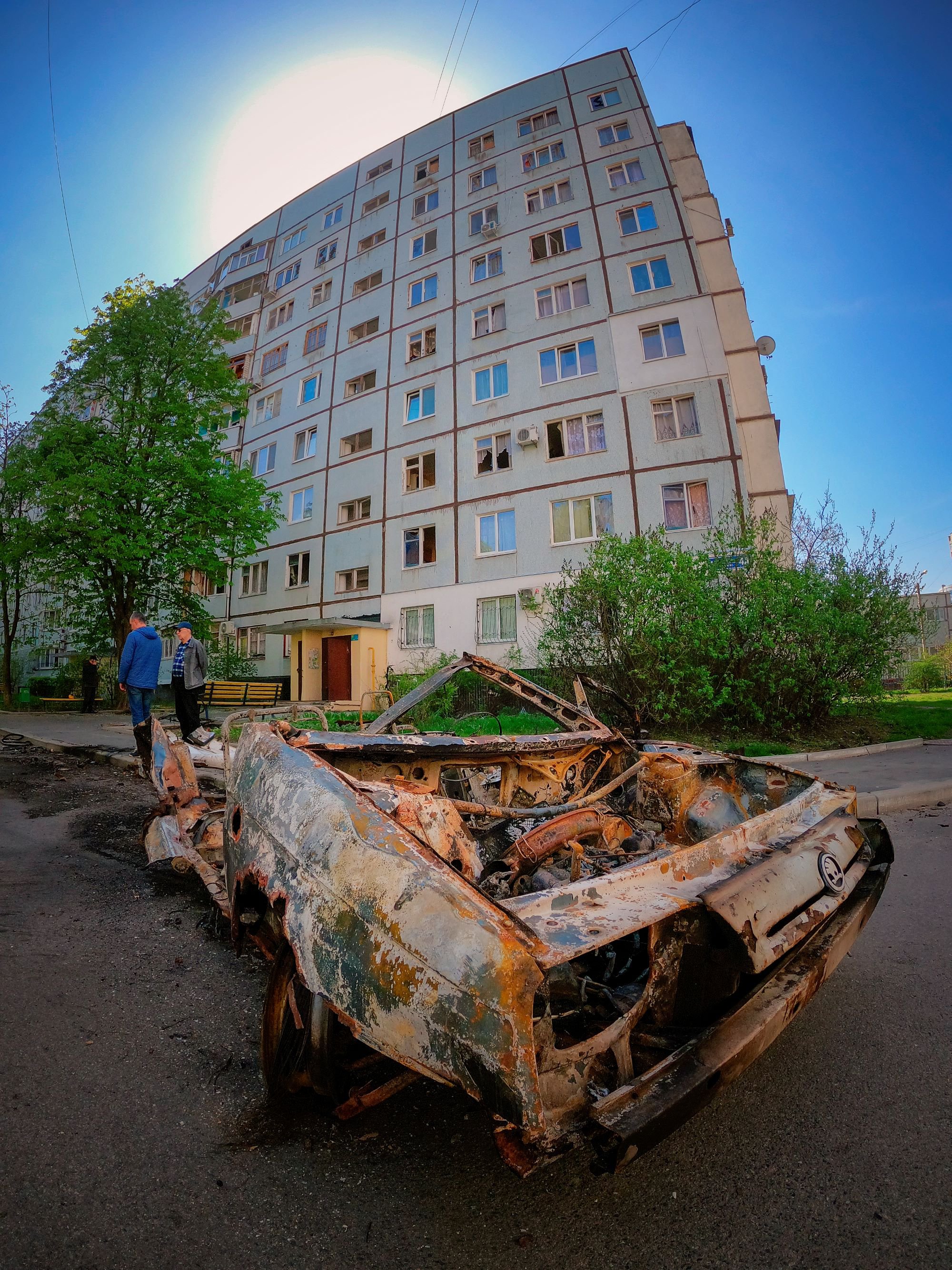
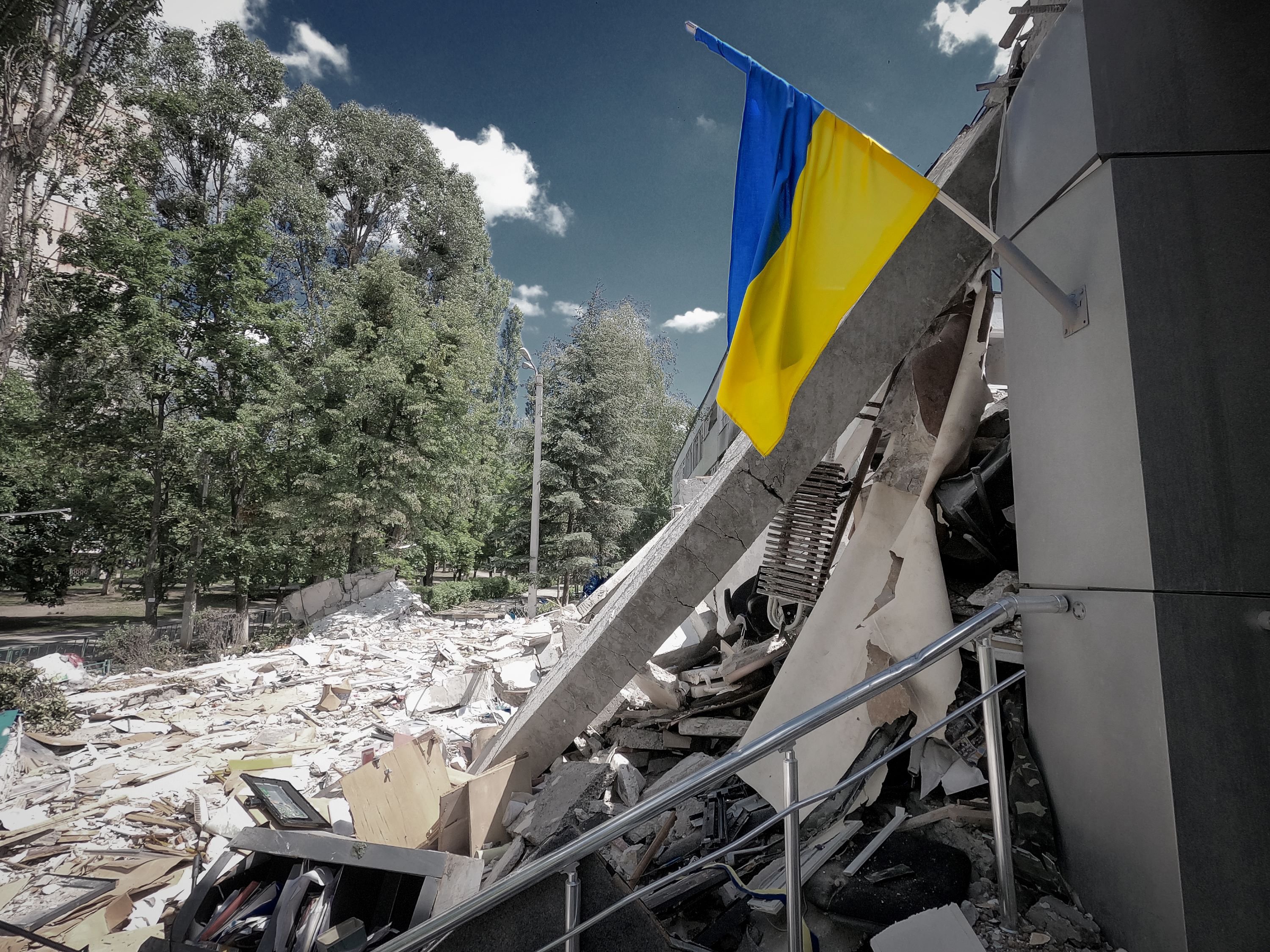
No longer on schedule
Recently, six images made by Vadym Bielikov were bought by the Associated Press.
“At first, they hesitated whether the images were really showing rockets from Belgorod. They had to check. Since we are talking about war crimes here, and the Associated Press is a respectable news agency, they are very careful about the information they choose to share. But there were official statements from the city administration, conclusions of forensic experts and photographs – everything matched. They took my photos in eventually.”
Vadym shares the images free of charge because he believes that "the more people see where the rockets come from the better." In total, he took between 62 to 63 photos. You can't count them exactly because even during our conversation Kharkiv was hit twice. And then twice more after our conversation the same day.
The photographer decided to collate all the images into a single frame. He made calculations in Photoshop: 60 photos will fit a 1-metre by 5-metre canvas. After that, he took a few more photos. And then a few more...
“Currently it is not possible to shoot that often,” Vadym says. “Previously, strikes from Belgorod were coming in regularly, as if on schedule, starting at 11:00 p.m. Plus or minus 10 minutes. After Ukraine has received Western weapons and started to strike back, they turned into cowards and changed their tactics.”
“Now the rockets are being fired randomly: first at 9:30 p.m., the next day at 03:30 a.m., the following day at 05:00 a.m. and so on.”
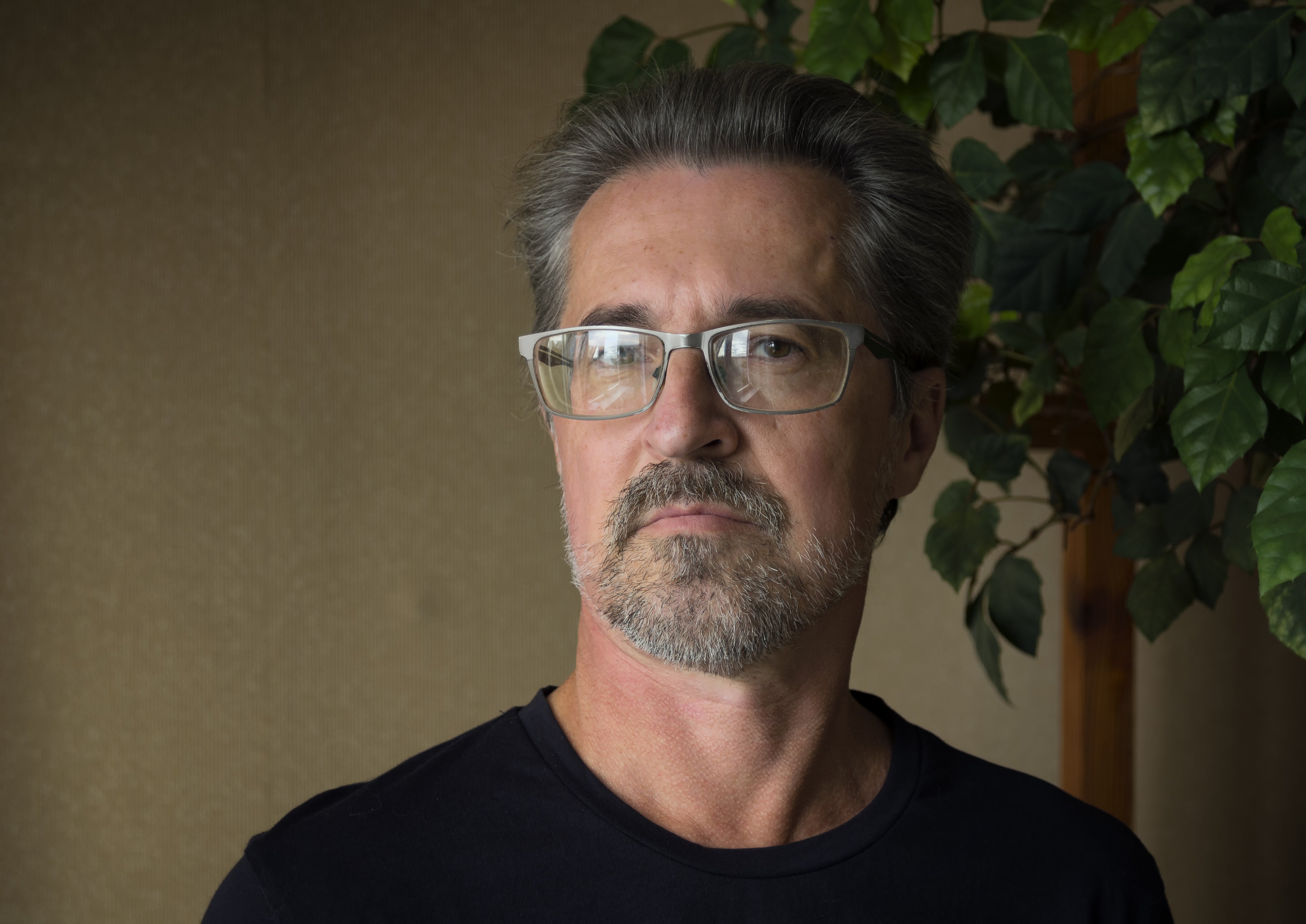
Russia is dead forever to me
Vadym Bielikov is an ethnic Russian. Most of his relatives still live in Russia.
“At first, our relatives called us regularly: do not worry, we will liberate you. And I stand by the window and watch where the rockets are flying from. I told my relatives about what I saw, but they claimed that ‘it was your people who were shooting at you’.
“Maybe they are not bad and not stupid at all, but the Kremlin propaganda blew their brains out completely. They believe they are saving us. I sent my cousin several videos of shelling in Kharkiv. All I got back was a deafening silence. So we stopped talking to each other. Now we think we have got no relatives left at all.”
“I have disliked Russia for a long time, but after the war broke out, it became apparent, and not only for me. Kharkiv (and this is no secret) used to be a city with different moods. The border is 30 km away. They used to come to us from Belgorod to buy sausage because ours was both better-quality and cheaper. And now everyone from Kharkiv is “sending” Russia as far as possible (asking the Russians to follow the "Russian warship"). Because everyone knows where death comes from.”
Vadym has several photos showing low-quality Russian rockets exploding in mid-air and getting self-destructed. He also has a dream to photograph how these missiles are getting shot down by the Ukrainian military.


